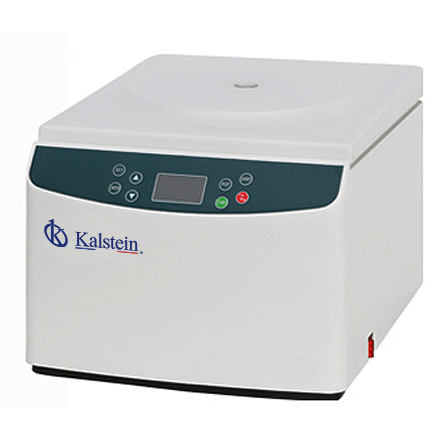The centrifuges for laboratory are equipment used to make the sedimentation of the components in a homogeneous solution in their different densities. For this they have a special design that subjects the solutions to the centrifugal rotation and acceleration at a high speed for a certain time, movements with which the solution is separated into two fractions.
To use a centrifuge it is necessary to follow a series of steps that allow its safe operation. Although the equipment of this type in general terms operate in the same way, it is advisable to consult the use manual provided by the supplier even if one has experience in the use of centrifuges. The first thing to do is turn on the switch actuator and open the lid with the corresponding button that has a light indicator, which is lit when the centrifuge is properly closed.
After placing the necessary adapters in this laboratory equipment, the tubes are placed, preferably in a balanced and symmetrical manner, and the lid is closed. Then the speed is adjusted using the configuration buttons, either using rpm, rcf or rad according to the preferences and the time is selected. It is necessary to also select the speed of acceleration and brake.
It is recommended to check that the configurations are adequate before operating the centrifuge and verify that excessive vibration does not occur. This problem is solved by balancing the tubes and placing them symmetrically, as this could cause problems in the process. During operation, the security system prevents the equipment from being opened and at the end of the process it is deactivated in order to open it and collect the tubes.
For the use of centrifuges for laboratory it is recommended to adopt some measures that contribute to reduce the risks derived from its operation. Distribute the load symmetrically, use the same format of test tubes and avoid the use of cracked or damaged equipment, whether plastic or glass, and verify that excessive vibration does not occur when centrifuging are the basic recommended care to avoid problems related to equipment and material.
These problems are usually broken tubes and faults in the operation of the centrifuge, and for you to have information that allows you to act in case this happened, we will dedicate this special publication to talk about the subject.
What should I do in these cases?
If the rupture of a test tube is detected inside the centrifuge when the laboratory equipment is in motion, it is necessary to interrupt the centrifugation process. A common mistake when this happens is to immediately open the centrifuge, but this should not be done until half an hour later, to settle the bioaerosol that has formed. This waiting action should also be taken when the problem of rupture of a tube is discovered when the equipment has stopped.
For the cleaning of tube fragments, special gloves that resist biological and mechanical risks, tweezers, cotton swabs and paper should be used. The entire interior of the centrifuge must be carefully cleaned, as well as the rotor and the adapters used.
In any case, it is best to adopt preventive measures, which includes checking that the tubes are in perfect condition and arrange them in a balanced and symmetrical way inside the centrifuge before putting it into operation. This reduces the chance of rupture in test tubes and the risks associated with exposure to biological samples.
At Kalstein we have an excellent range of centrifuges, laboratory equipment of the highest quality and technology. That’s why we invite you to take a look at our centrifuges available HERE

